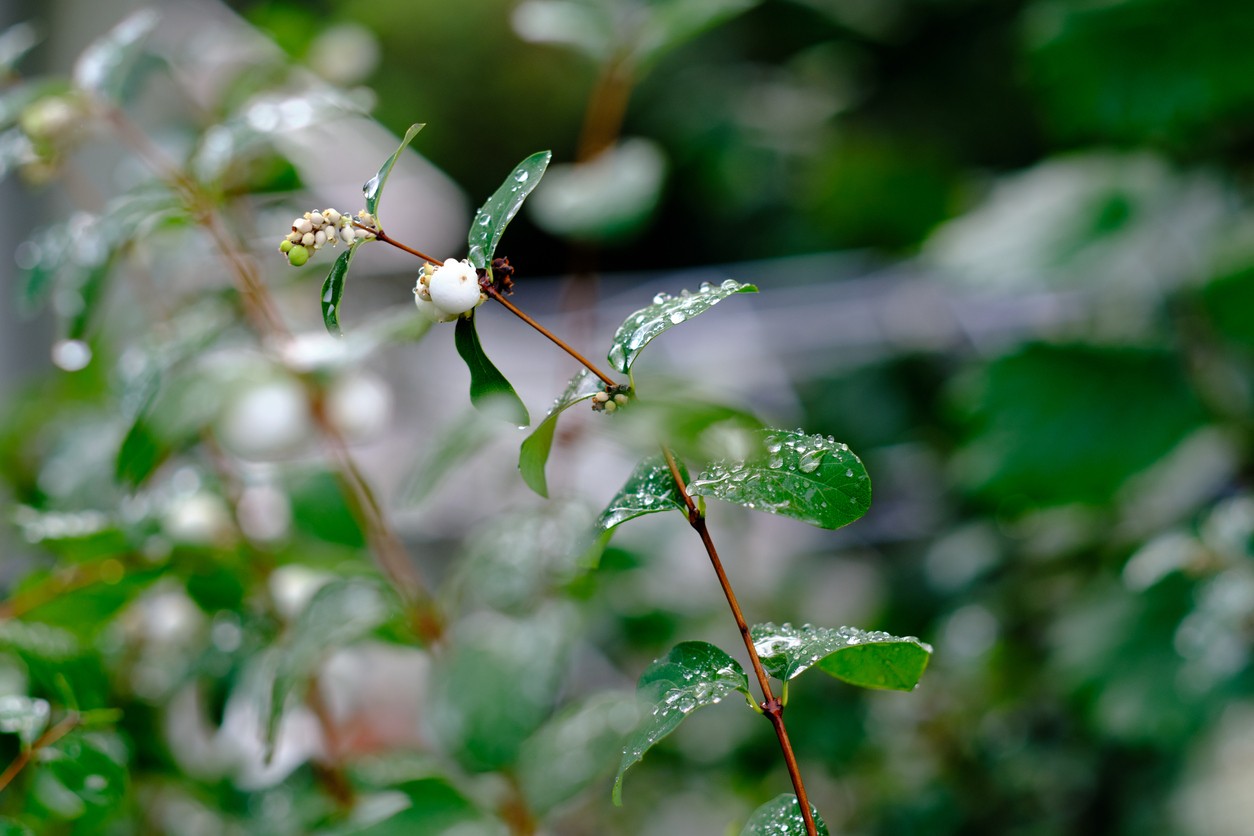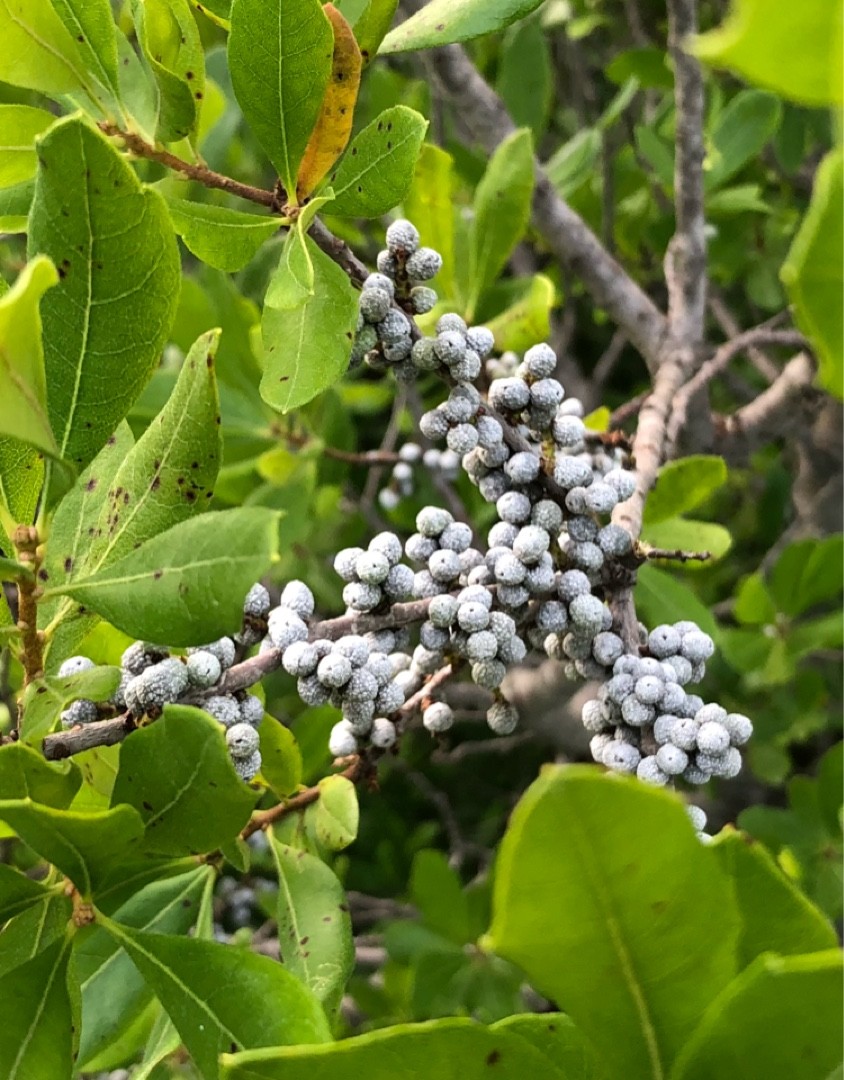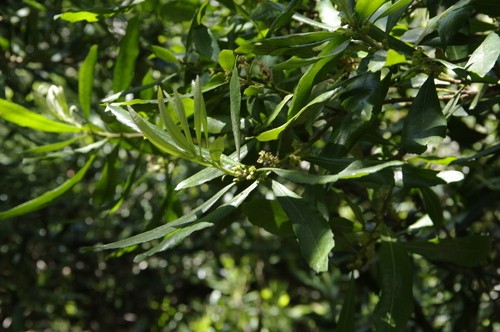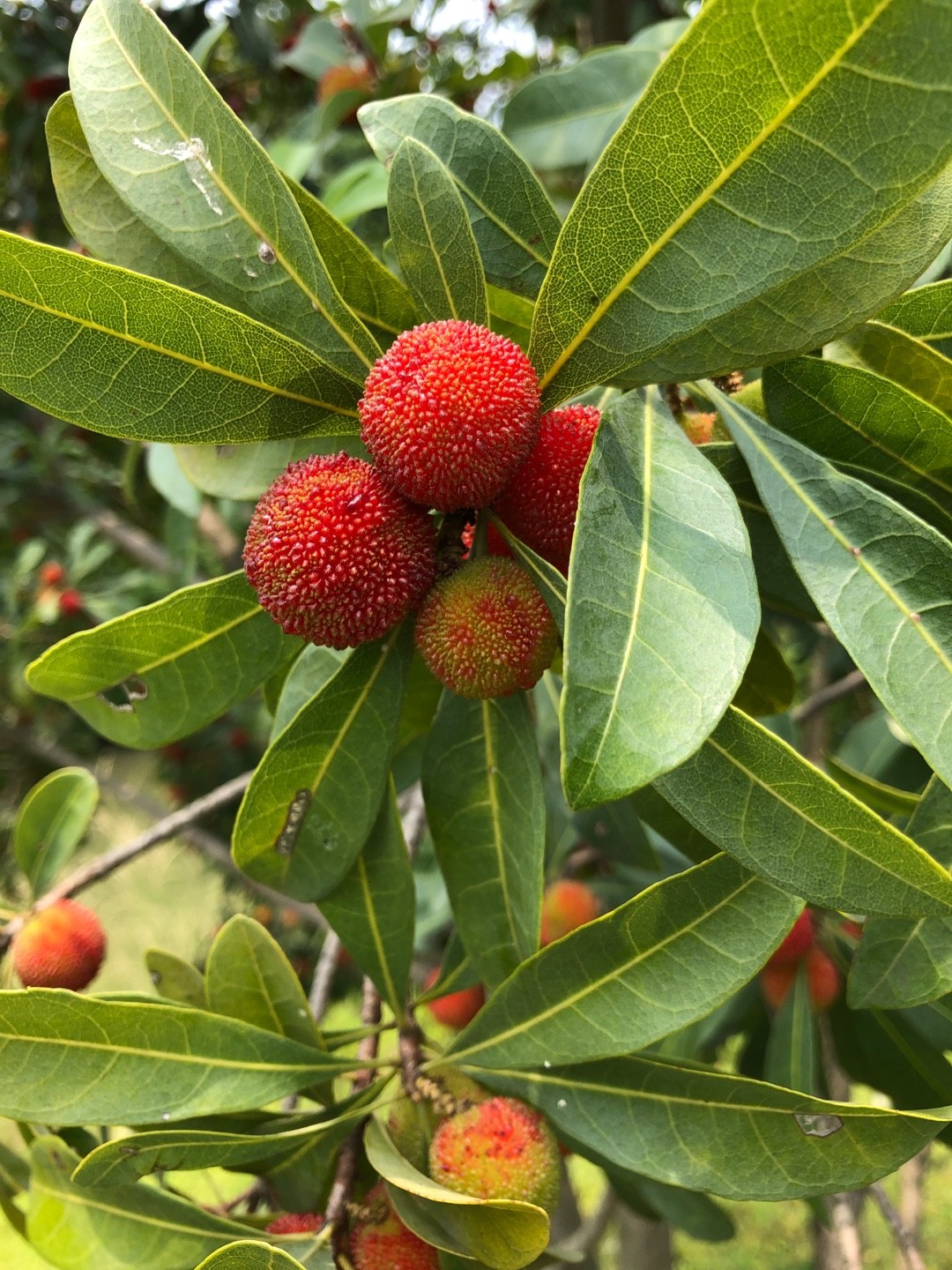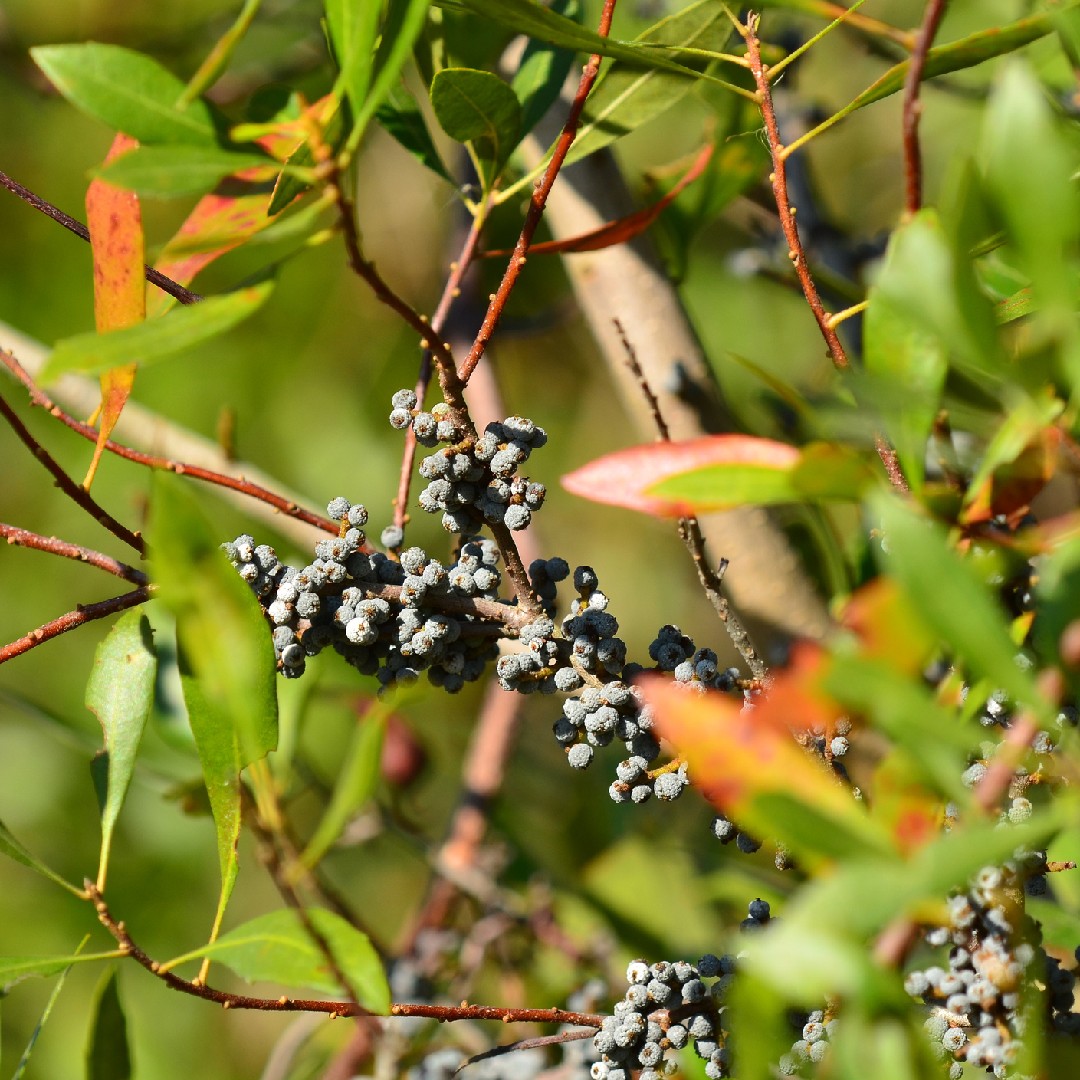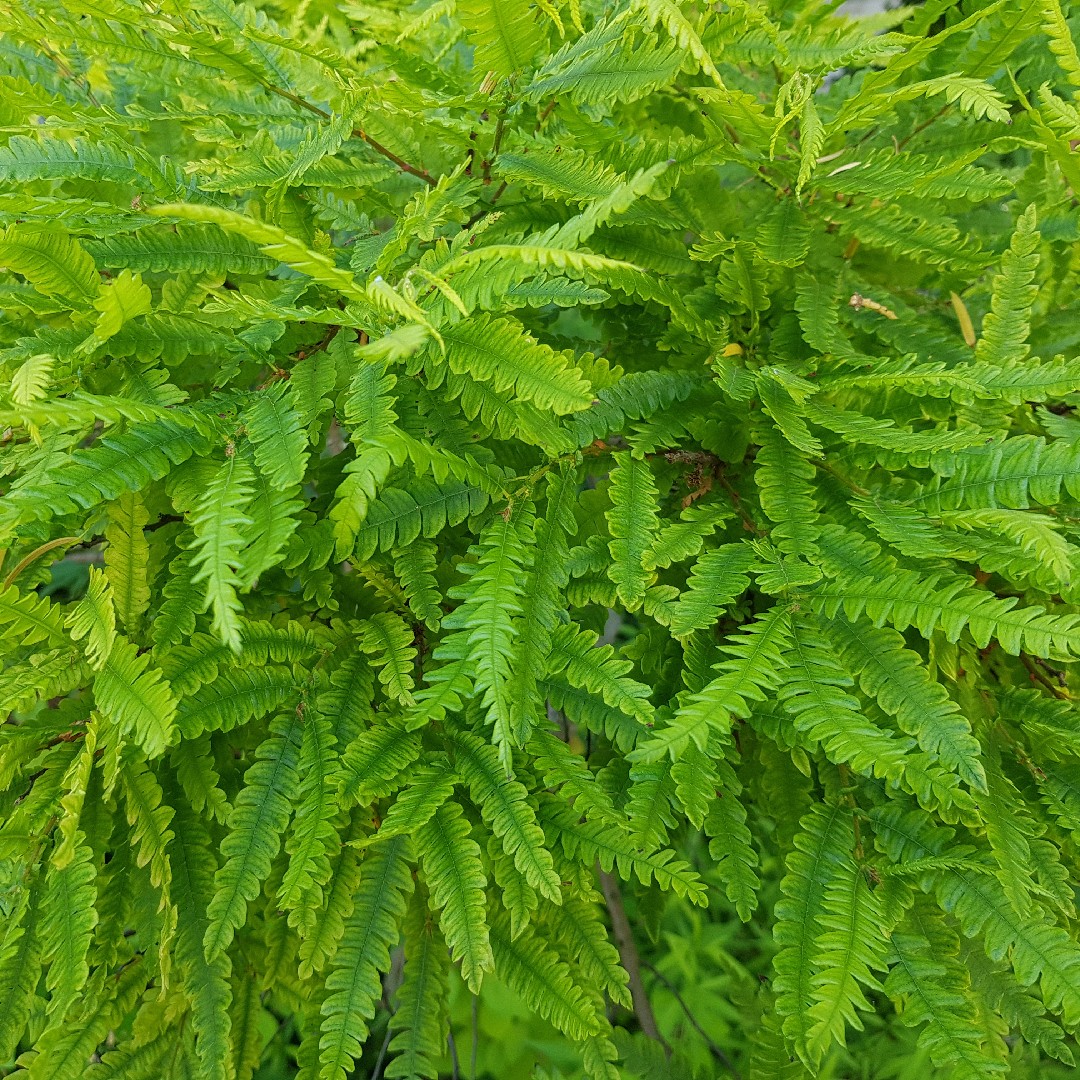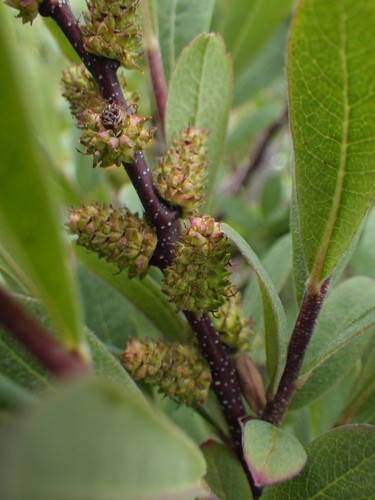Evergreen bayberry
Evergreen bayberry, also known as Wax Myrtle and Morella caroliniensis, is a small, wispy evergreen shrub with plenty of landscaping possibilities. It makes an excellent hedge or screen. Both male and female trees must be present for berries to be produced. Although the berries are not good for eating, they can be boiled down to make wax, hence the name, wax myrtle.
